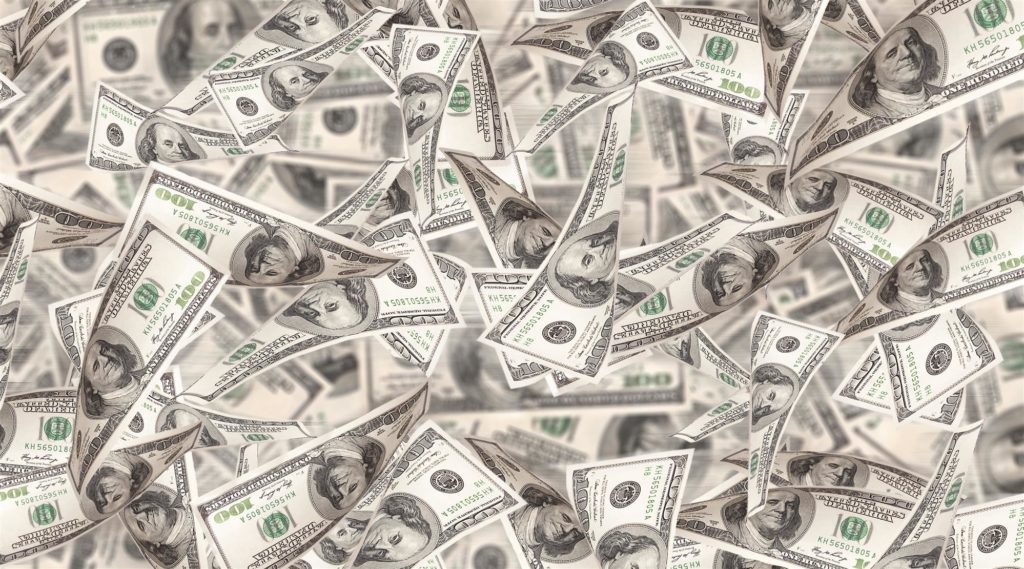10 Ways to Avoid High Water Bills
The monthly bills eat into your budget, so it’s no wonder people often seek more affordable cable TV plans or utility companies with better rates. High water bills may require plumbing contractors to take a look at what is driving up the cost. While some might consider this an extra expense, addressing why the water rate is so high can help save money on the water bill in the long run.
According to CNN Money, the average household incurs a cost of $335 annually on water bills. If your monthly bill seems higher than it should be, and/or has gone up, here are some possible reasons why.

When to Call a Plumber
Plumbing contractors are experienced in dealing with water problems. Their knowledge and skill go way beyond using drain cleaner or a plunger, so finding and fixing a leak or clogged pipe before it’s too late can save you a great deal of money. Our first tip on avoiding high water bills is to call a plumber who can address the problem and ensure your plumbing system is functional and cost-effective.
- Contact a plumber if:
- Water pressure is low: A lack of pressure can mean residue has clogged a pipe, a pipe is leaking, or one has completely fractured. The issue can be within your plumbing or a city-wide problem, but only a plumber can determine the root cause.
- There are backups: Although a backup means no water is getting through, a blockage can trigger problems such as raw sewage and floods; it can also lead to a pipe rupture, so you can see how fixing the problem can lead to conserving on the monthly bills.
- There’s no hot water: This may be caused by a failed pipe or a bad water heater, which can impact other utility bills. A plumbing inspection can identify the reason for water heater failure and decrease any costs associated with it.
- You hear water running: When no water is being used, but water is heard running through the pipes, there’s likely a leak. Look for wet or brown spots on the walls or ceilings, which your plumber can use as a guide to find the source of the problem.
- There are gurgling sounds: A drain problem may be the culprit if there’s gurgling sound while using the toilet, shower, dishwasher, or washing machine. You risk a backup by keeping these running and unnecessarily wasting water.
- You experience slow drainage: This is another sign of a clog, which can damage the pipe, along with any method you might use to clear it. If the kitchen or bathroom sinks don’t drain properly, call a plumber.
Room by Room: How to Keep the Bills Down
The following tips will help keep the water bill down and protect the environment, just by changing some simple habits in and around the home. If you’re serious about how to save money on a water bill, try the following:
In the Kitchen
- Refrigerate drinking water: Either use bottled water or fill up a pitcher and store it in the refrigerator. You avoid running the tap while waiting for cool-enough water to drink. If the pitcher has a filter attached, that’s better. Or fill a cup from the tap and put some ice in. These methods are a water-saving alternative to keeping the tap running while the water cools off, unnecessarily wasting resources.

- Use a dishwasher properly: According to gov, a dishwasher uses six gallons of water, which amounts to less than washing dishes by hand. A kitchen faucet flows at two gallons per minute. Also, scraping food off plates is enough; there’s no need to pre-wash them. Your dishwasher will handle the rest of the cleaning. Only run the system when it is full, as the same amount of water is used no matter how big the load. The same goes for doing the laundry; wash only a full load of clothes before running the cycle.
- Install a faucet aerator: This novel device reduces water flow. By adding air to the outgoing stream, it limits the volume of flowing water, but it also compacts it to maintain or even increase the pressure. You only need to screw it onto the bottom of your faucet; no plumbing companies are needed. Some new faucets come with aerators pre-installed, saving as much as 700 gallons per year on your bills, according to the U.S. Environmental Protection Agency.
- Efficient water heating: Running the tap until it gets hot is a waste of time and—water. Instead, take some water and use the stove or microwave to heat it up. Therefore, none is wasted, other than what you intend to use. A point-of-use hot water heater is another option. Installed under the kitchen sink by plumbing contractors, it can supply hot water as soon as the tap is turned on, so it is useful when washing dishes and pots or fixing up hot drinks. Plus, it costs much less than wasting gallons of water at a time.
In the Bathroom
- Shorter showers: Low-flow showerheads keep water usage down, but so does reducing the time your shower head is running. During a 15-minute shower, it will use 37.5 gallons, but a five-minute shower will only draw 12.5 gallons. The U.S. Department of Energy also says low-flow models use just 2.5 gallons per minute, compared to older units that can use up to 5.5 gallons each minute, yielding a 25% to 60% reduction in your water bill. Sticking to the five-minute shower rule, you’ll also save with this alternative, compared to taking a bath.
- Check the toilet: A toilet leak can waste hundreds of gallons of water per day. From time to time, look for evidence of leakage, such as unusual sounds and evidence of moisture outside the toilet or on the floor. To save water here:
- Drop a dye tablet into the tank; if you soon see colored dye in the bowl, there is a leak and a plumber should be called.
- Change the toilet flapper every year to ensure it’s always working properly, or even install an adjustable one to adapt to the flush volume as needed, potentially saving gallons each time you flush.
- Install a fill cycle diverter, which directs overflow water back to the tank while the toilet is filling.
- Turn off the water when brushing/shaving: The longer you run the faucet, the more water you waste. Only run the tap when you need to wash off your toothbrush. The same goes for shaving. Use your razor without the faucet on, running the water only when you need to rinse off. This potentially saves several gallons of water each time, as plumbing companies well know.
In the House
- Manage your hot water system: Foam insulation will prevent heat loss, so you’ll achieve the desired temperature faster, without waiting for running water to heat up. Also, move the hot water heater closer to where the hot water is used, so there’s less distance for heat to be lost. Other ways to reduce bills include installing a hot water recirculation system or a tankless hot water heater. Although an up-front investment, these can lead to lower bills and long-term savings. Also, don’t forget professional maintenance from time to time to avoid unforeseen inefficiencies and failures.
Outdoors

- Focus on water conservation: Ways to conserve water use outdoors include attaching rain barrels to the gutter drain spouts; the water collected can be used for washing the car or watering the plants. Soaker hoses, wading pools, and garden mulch (reducing evaporation) reduce the amount of water you use. You’ll also save on water bills by sweeping the sidewalks, having drought-resistant plants, and washing the car less frequently (or going to a car wash).
Call Christianson Air Conditioning & Plumbing
Since 1950, we have addressed the various plumbing and air conditioning needs of customers throughout central Texas. We focus on what customers need, finding the right solution, being responsive, and providing exceptional service through training and a caring attitude. If you suspect a leak or a problem with a faucet, sink, toilet, or water heater, or wish to have a plumbing inspection, submit a service request or call one of the most respected plumbing companies in the region at 512-246-5400 in Austin and 210-651-1212 in San Antonio.
Sources
- http://money.cnn.com/2012/02/27/pf/water_bills/index.htm
- https://water.usgs.gov/edu/activity-drip.html
- http://www.nyc.gov/html/dep/html/ways_to_save_water/waterleak_wide.shtml
- https://www.homeadvisor.com/cost/plumbing/
- https://www.energy.gov/energysaver/water-heating/reduce-hot-water-use-energy-savings
- https://www.epa.gov/watersense/bathroom-faucets



Sorry, comments for this entry are closed at this time.